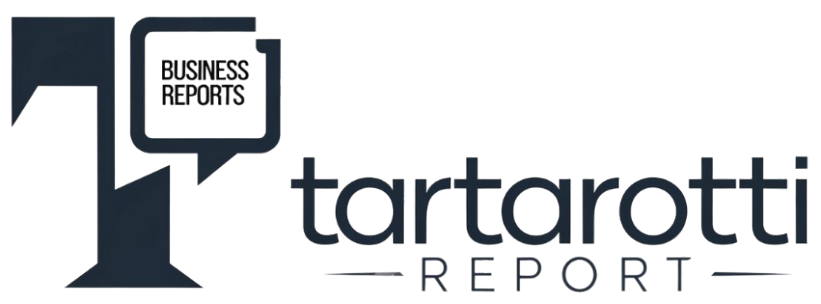Introduction:
Executive health is directly linked to organizational performance. As corporate responsibility evolves, ESG (Environmental, Social, and Governance) issues are gaining ground in sustainability discussions. One of the critical areas within the “Social” dimension of ESG is the implementation of corporate health programs that cater to the diversity of employees, especially in leadership positions.
Executives face unique health challenges: stress, lack of time and the demands of high performance require customized wellness solutions. However, it is essential that these programs are inclusive, accessible and adaptable to a diverse workforce, taking into account aspects such as age, gender, health conditions and individual preferences. In this article, we’ll explore how to implement inclusive and sustainable executive health programs that align with ESG principles, with practical tips and scientific background.
Part 1: Straight to the Point 🎯 – Basic Strategies and Practical Actions
Part 1, “Straight to the Point”, offers practical actions and suggestions for immediate action.

How to Create Inclusive Wellness Programs for Executives
Here are five practical and fundamental tips for creating wellness programs that cater to executive diversity and comply with ESG guidelines.
- Conduct a Comprehensive Health Diagnosis
- How to do it: Before implementing any program, it is essential to know the health reality of executives and employees. Carry out a complete diagnosis through anonymous surveys, physical and mental health assessments, and data collection on lifestyle habits. This can include individual interviews, analysis of medical tests and quality of life questionnaires.
- Why it’s important: Each executive has a unique need. Personalized diagnosis helps identify key areas that need to be worked on, such as stress levels, poor diet or lack of physical activity. In addition, the diagnosis allows the program to be customized, ensuring that it is inclusive and effective for all profiles.
- Offer Flexible Health Programs
- How to do it: Create a menu of wellness program options, including physical activities, mental support, nutritional guidance and resilience training. Offer in-person and virtual modalities to fit around executives’ busy schedules. Also include a variety of training intensity options, from walking and stretching for beginners to more intense training for those with established habits.
- Why it’s important: Executives have unpredictable work routines, which makes flexibility essential. When a program is flexible, there is greater adherence and engagement. This inclusive approach also allows each executive to choose what works best for them, whether it’s a yoga session to relieve stress or a nutritional plan to improve energy throughout the day.
- Prioritize Accessibility and Inclusion
- How to do it: Make sure that health programs offer accessibility for everyone, regardless of physical limitations or pre-existing health conditions. This includes adapting physical activities for people with reduced mobility and ensuring that food options are suitable for different dietary restrictions, such as gluten intolerance or vegan diets.
- Why it’s important: Inclusion is one of the central pillars of the “Social” dimension of the ESG. An accessible and inclusive health program increases the sense of belonging among executives and employees. It also promotes a fairer and more equitable corporate environment, which has a positive impact on organizational culture and talent retention.
- Involve leadership in the process
- How to do it: Train leaders to be examples of health and well-being within the organization. Encourage them to actively participate in the programs, share their own experiences and promote wellness among their teams. This can be done through healthy leadership workshops and personalized coaching sessions for executives.
- Why it’s important: Executives who adopt healthy practices and actively participate in wellness programs are more likely to inspire their teams to do the same. In addition, active leadership creates a culture of integrated health, where well-being is seen as an essential part of corporate success.
- Monitor Progress and Adapt Programs
- How To: Establish clear metrics to track the progress of wellness programs, such as adherence levels, improvement in health indicators (such as cholesterol reduction or stress), and participant satisfaction. Use this data to adjust programs as needed, while maintaining flexibility and relevance to the executive workforce.
- Why it’s important: An effective health program is one that evolves over time. Continuous monitoring allows for quick adjustments and constant customization to meet the ever-changing needs of executives. It also demonstrates the company’s commitment to employee health, which is an important point for corporate governance (ESG dimension G).
Part 2: Explaining the Concept Cientificamente👨🏻🔬 – Deepening your knowledge
Part 2, “Explaining the Concept Scientifically”, provides a scientifically-based in-depth look at the “whys” and explains in more detail the suggestions set out in part 1

The Basis for Inclusive Health and ESG Programs
The implementation of corporate wellness programs is not just a trend, but a strategy validated by several scientific studies that demonstrate the direct impact of employee health on organizational performance. When these programs are inclusive and tailored to individual needs, the return on investment is even more significant. In addition, ESG practices benefit because a healthy, diverse and fair environment aligns perfectly with the social and governance pillars.
1. The Science Behind Diversity in Corporate Health
Studies show that the well-being of a diverse workforce requires equally diverse approaches. According to a report published by the World Health Organization (WHO), diversity within an organization is associated with different health profiles, which requires corporate programs to consider variables such as gender, age, health conditions and lifestyle.
Impact of Age Differences: Age diversity is one of the main challenges when creating inclusive health programs. While young executives may be more focused on high-impact physical practices, older executives may face challenges related to mobility or chronic conditions. A 2019 study published in the Journal of Occupational Health highlights that customizing wellness programs based on age results in a significant improvement in participation and satisfaction levels.
Gender Differences: Another relevant point is the differentiated approach for men and women. Women, for example, may face hormonal issues and specific needs, such as reproductive health and menopause. A study published in the Journal of Occupational and Environmental Medicine in 2020 highlighted that health programs that address these issues are more effective in reducing absenteeism and improving quality of life.
2. Personalized and Affordable Training for Executives
Physical activity programs, such as personalized training for executives, have shown great effectiveness in reducing stress and improving cognitive performance. A study conducted by the American Psychological Association (APA) highlighted that moderate to intense physical exercise significantly reduces levels of cortisol, the stress hormone, which can negatively impact decision-making in pressure situations.
However, the key to an inclusive wellness program is to ensure that everyone, regardless of their physical limitations, can participate. The use of accessible alternatives, such as yoga, pilates or light walking, allows employees with different levels of physical fitness to join in. This is especially relevant when it comes to executives with reduced mobility or chronic conditions such as arthritis.
3. Functional and Sustainable Nutrition
Nutrition plays a crucial role in the well-being and performance of executives. A study by the Harvard School of Public Health showed that balanced diets tailored to individual needs improve not only physical health, but also cognitive ability and mood. However, for a nutrition program to be inclusive, it must consider dietary restrictions such as food intolerances, allergies and personal preferences (vegetarianism, veganism, etc.).
In addition, functional nutrition can be aligned with the principles of sustainability, one of the dimensions of ESG. By promoting diets that favor the consumption of organic and low environmental impact foods, such as plant-based diets, companies can reduce their carbon footprint while improving the health of executives.
4. The Role of Mental Wellbeing in Corporate Performance
The mental health of executives is a critical factor in organizational success. Studies show that chronic stress can reduce the ability to make rational decisions, increase the risk of chronic diseases and negatively affect the work environment. A 2021 article published in the Lancet Psychiatry identified that interventions aimed at mental health, such as mindfulness programs and cognitive-behavioral therapy (CBT), are effective in reducing stress and improving focus.
In addition, including mental well-being in executive health programs also addresses the “Social” dimension of ESG, promoting a more inclusive and empathetic work environment in which everyone has access to psychological support resources. This results in a more resilient workforce, prepared to face challenges and less prone to burnout.
5. ESG Health Reporting and Metrics
Finally, an essential aspect of integrating wellness programs into ESG strategy is measuring results. Companies should establish key performance indicators (KPIs) that show the direct impact of health initiatives on the work environment and employee performance. These KPIs can include:
- Reduction in absenteeism rates
- Improved employee satisfaction (measured through internal surveys)
- Increased productivity and capacity for innovation
- Reduction in costs related to sick leave and health treatments.
Establishing and reporting these metrics, in addition to promoting transparency, allows companies to demonstrate to stakeholders how they are investing in the well-being of their executives, in line with ESG expectations.
Conclusion
Inclusive corporate wellness programs are a necessity in a corporate world that seeks to align itself with ESG principles. By addressing the diverse needs of executives – from mental and physical health to sustainable diets and accessibility – companies not only improve the quality of life of their leaders, but also position themselves as pioneers in social responsibility and effective governance. Executive health, when promoted strategically and in line with ESG, is a powerful tool for building more resilient, productive and sustainable organizations.

Kelton Tartarotti, a specialist in Health, Longevity and Lifestyle Reprogramming, brings an innovative approach to corporate and personal well-being in the Tartarotti Report. With a comprehensive background in Physical Education, including a BA, BSc and post-graduate studies in the Physiological Basis of Personalized Training and Sports Nutrition, Kelton has a solid foundation in sports and health sciences.
He is registered with the Regional Council of Physical Education (CREF-ES) under number: 005334-G/ES
His experience includes:
International certification as a Personal Trainer by the World Fitness Association (Florida/USA)
Coaching training by ABRACOACH
Specialization in Integrative Functional Health
15 years as a physical trainer for elite MMA athletes in world events
Working as a Physical Trainer at the Espírito Santo Olympic Center (COES)
In the Tartarotti Report, Kelton offers valuable insights into:
Scientifically-based executive health protocols
Stress management and resilience techniques for leaders
Sleep optimization strategies for cognitive performance
Functional nutrition adapted to corporate life
Efficient exercise programs for busy schedules







